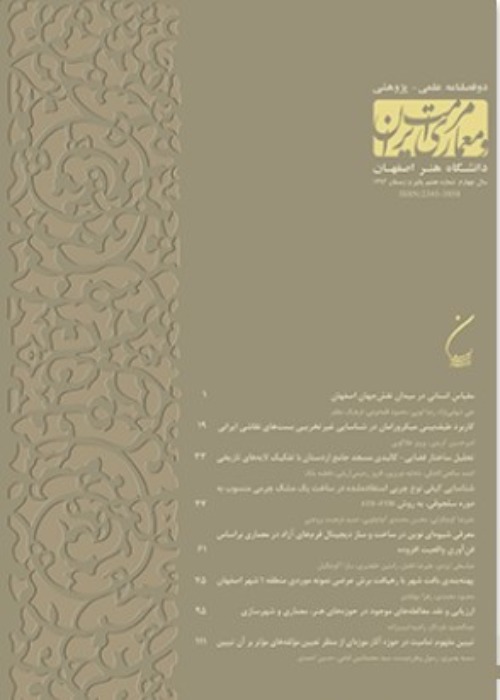The Fourfold Divisions and their Origins in the Iranian Architecture and Urbanism
Author(s):
Abstract:
The fourfold division archetype is one of the distinguishing characteristics of Iranian architecture and urbanism in the times prior to and after the Islamic periods. However, its philosophy of existence has so far remained obscure. Therefore, the subject matter in this paper will be searching for its origin as well as analyzing the dimensions of its design. Therefore, the objectives of this research are tracing the most significant monuments and cities in Iran which contain the fourfold division pattern, as well as, knowing the reasons and characteristics of their application. It is, however, clear that examining this subject will be useful in better perceiving some of the ancient Iranian intellectual and philosophical principles underlain in the architecture and urbanism of the past in Iran; and subsequently it is helpful in surmounting the obstacles in the path of rebuilding the elements belonging to the vernacular architecture and urbanism. The methodology of this study is based on the historical and analytical research; in which, while extending an interdisciplinary approach, we have attempted to introduce new concepts of design framework for architecture and urbanism. According to the findings of this study, the fourfold division pattern in pre-Sassanid Iran has been formed under the influence of a sacred orientation, based on the Sun rising in the East and the mithraic cross-shaped symbol. Mithraism, therefore, has had a significant role in this architectural orientation, and subsequently, during the Sassanid period, as people believed in the two celestial deities who were visualized in the form of the Zoroastrian holy stars, also other directions such as the North, South and West, were considered important. In the Islamic era, however, due to the ideological shift and consigning the original philosophy of the fourfold division to total oblivion, this form continued to exist while bearing new symbolic notions, often originated from Quran, Hadith and esoteric sources of Sufism, and eventually became an enduring feature in the architecture and urbanism of Iran.
Keywords:
Language:
Persian
Published:
Maremat & memari-e Iran, Volume:5 Issue: 10, 2016
Pages:
47 to 62
magiran.com/p1524439
دانلود و مطالعه متن این مقاله با یکی از روشهای زیر امکان پذیر است:
اشتراک شخصی
با عضویت و پرداخت آنلاین حق اشتراک یکساله به مبلغ 1,390,000ريال میتوانید 70 عنوان مطلب دانلود کنید!
اشتراک سازمانی
به کتابخانه دانشگاه یا محل کار خود پیشنهاد کنید تا اشتراک سازمانی این پایگاه را برای دسترسی نامحدود همه کاربران به متن مطالب تهیه نمایند!
توجه!
- حق عضویت دریافتی صرف حمایت از نشریات عضو و نگهداری، تکمیل و توسعه مگیران میشود.
- پرداخت حق اشتراک و دانلود مقالات اجازه بازنشر آن در سایر رسانههای چاپی و دیجیتال را به کاربر نمیدهد.
دسترسی سراسری کاربران دانشگاه پیام نور!
اعضای هیئت علمی و دانشجویان دانشگاه پیام نور در سراسر کشور، در صورت ثبت نام با ایمیل دانشگاهی، تا پایان فروردین ماه 1403 به مقالات سایت دسترسی خواهند داشت!
In order to view content subscription is required
Personal subscription
Subscribe magiran.com for 70 € euros via PayPal and download 70 articles during a year.
Organization subscription
Please contact us to subscribe your university or library for unlimited access!


